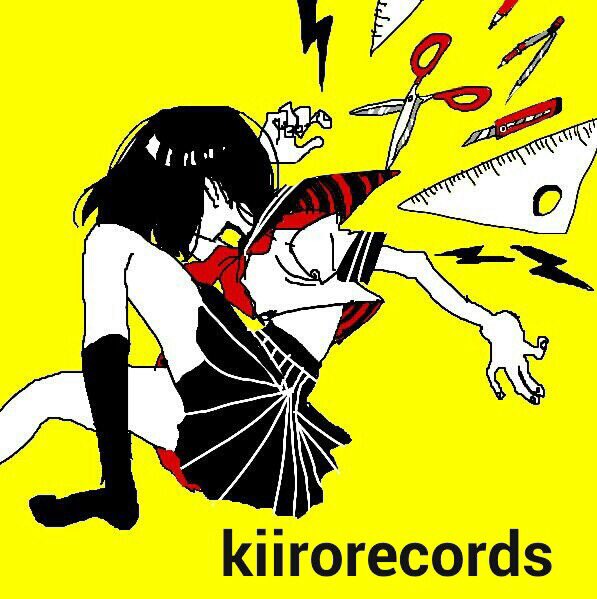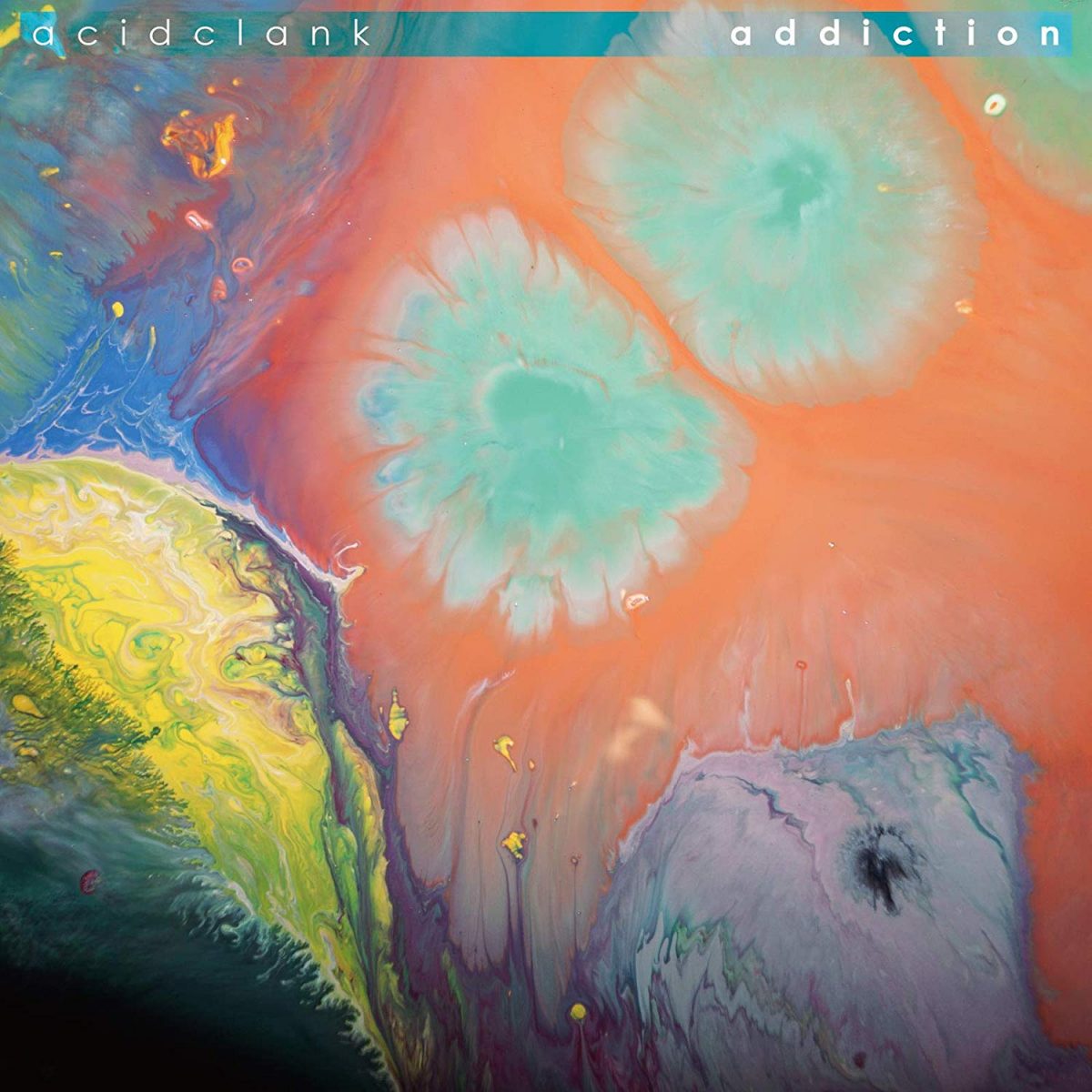One of last year’s most anticipated Japanese shoegaze releases – at least among fans overseas – was hades (the nine stages of change at the deceased remains), the latest from Tokyo-based My Dead Girlfriend. It was a big year for the band, who earlier in the year shared a stage with Astrobrite and, in support of the album, played a flurry of shows all over the country including a headlining spot at the annual Kyoto Shoegazer event. By October, eccentric frontman Yuki Ishikawa had begun working on his next musical endeavor, a solo project that would be known simply as My Dead Ishikawa.

One of last year’s most anticipated Japanese shoegaze releases – at least among fans overseas – was hades (the nine stages of change at the deceased remains), the latest from Tokyo-based My Dead Girlfriend. It was a big year for the band, who earlier in the year shared a stage with Astrobrite and, in support of the album, played a flurry of shows all over the country including a headlining spot at the annual Kyoto Shoegazer event. By October, eccentric frontman Yuki Ishikawa had begun working on his next musical endeavor, a solo project that would be known simply as My Dead Ishikawa.
My Dead Ishikawa’s debut album 幸せの谷の死体 (English: A Corpse in the Happy Valley) – set to be released on April 20th – features a number of guest musicians, including current and former members of My Dead Girlfriend, shoegaze and indie pop mastermind Kensei Ogata, GUEVNNA drummer Yamaguchi, and a bunch more. The idea came up a few years back, but really started coming to fruition last fall. Each of his guest musicians really helped shape the overall sound on the record, adding their own influence during the recording process. As a result, the album explores a vast array of sounds, from grindcore to shoegaze to guitar pop to experimental noise. Ishikawa notes that while there are similar elements to My Dead Girlfriend’s music on the record, it’s how the sound is balanced that really separates it from his previous work. While MDG’s sound is built more delicately upon a shoegaze/noise-pop foundation, each track on A Corpse in the Happy Valley offers something different. “The theme is just recording my feelings and ideas, without being too elaborate.” The resulting sound is a lot more free and experimental, with the pop-shoegaze sound that Ishikawa has to this point become known for representing only small portion of the finished product.
The moment the album starts, the difference in approach becomes clear, as the first two tracks – the album’s title track and “temi blaster” – are blistering noise pieces. Ishikawa’s first vision for his debut solo release was a start-to-finish noise album. “On those two tracks I was going for the fusion of noise and yelling in Japanese like on JOJO Hiroshige’s solo work.” To make things even more aggressive, Ishikawa called upon his friend Tomoyuki Yamaguchi – of stoner rock band GUEVNNA – to play drums on the first two tracks. Ishikawa cites Yamaguchi’s previous musical endeavors as the likely reason for the heavy grindcore influence that can also be heard in the songs.
There’s a major shift in style as the chaotic guitars and violent screams make way for the sort of melodic pop tunes that fans might have been expecting on an Ishikawa solo album. Just as on the first portion of the album, the sound on the third and fourth tracks, “kininaru aitsu” and “the theme from tenohira”, reflect the guest musicians that performed on them. This time around current and former members of My Dead Girlfriend are featured, with ex-drummer Takashi Shimano playing drums on both songs and former bassist Fumiaki Arakawa joining in on the third. The result, not surprisingly, contains sort of bubbly melodies, subtle guitar noise, and playful male-female twin vocals – in other words, this sounds a whole lot like My Dead Girlfriend. In the studio there was a certain sense of nostalgia for Ishikawa. “Current member Ideta and former member Shimano played, so there was the image of the band performing around 2007-2008 as we recorded the songs.”
By this point in the album, there are clearly two distinct sections. Ishikawa identifies the third act of the album as his favorite. Composition-wise, the album turns back to the more free-form style found in the opening two tracks. “A Nervous Addict in the Nittoh Mall Kumagaya” is a whimsical dreamscape of a tune, with wispy synths and spacey guitars woven together over steady backing percussion. On “Manbiki” and “Submission to the Silence”, things get a little more chaotic. My Dead Girlfriend drummer Tomoaki Kunii takes the lead in the writing process here and goes all out on the drums. All around him is a mess of squealing guitar noise, with spoken word vocals – courtesy of Saori Takei and Si,Irene’s Reed David on tracks 6 and 7, respectively – topping everything off. The latter two songs Ishikawa notes as being influenced by David Lynch’s Crazy Clown Time.
The 8th and final track stands alone as the final theme on the record. The guest musician on “kamikakushi” is none other than Kensei Ogata (of talk, flaria, and perhaps best known to readers of this blog as the man behind Tatuki Seksu). “I wanted to do a Japanese-style lyrical shoegaze song,” Ishikawa explains. “I was really happy that Kensei Ogata, who I really like, performed the vocals on the track.” The song has a talk-esque dreamy vibe to it, with Ogata providing delicate, J-Pop-style vocals over a backdrop over fuzzy guitar noise.
The album really consists of four phases that, at least stylistically, are pretty different. That being said, the changing of one word in the band name seems to have given Yuki Ishikawa a sense of freedom to express himself in a variety of ways. The original plan was to make a noise album, but he was under no obligation to stick to that. Musically, there’s always seemed to be a certain disconnect between his personality and the tone of My Dead Girlfriend’s music. There’s a sense of sweetness in the bubbly pop leads and poppy vocal melodies that is contrasted by the sweaty, screaming frontman destroying his guitar at the end of a gig. Balancing those elements is a key to what My Dead Girlfriend does, and on this album he’s thrown that all out the window. There’s no balance here. It’s just a whole bunch of what Yuki Ishikawa feels performed with a bunch of people Yuki Ishikawa likes to work with. It’s a personal record and that’s what ties the whole thing together.

Outside of a few gigs lined up in May – including a supporting spot on Mayalsian post punk outfit Joi Noir’s Japan tour – there are no concrete plans for My Dead Ishikawa going forward. Joining Ishikawa as the regular live band will be Sakagami (vocals & guitar) of Shojo Skip, Kawasuji (guitar), and My Dead Girlfriend members Kawakami (bass) and Kunii (drums). While nothing’s been decided, Ishikawa is considering the possibility of recording with the current lineup in the future.
Fans overseas are in luck as My Dead Ishikawa’s debut album A Corpse in the Happy Valley, will be available for purchase via outlets that ship internationally. Also, if you’re in the Tokyo/Saitama area in early May you can catch their first couple gigs.
Purchase the album:









